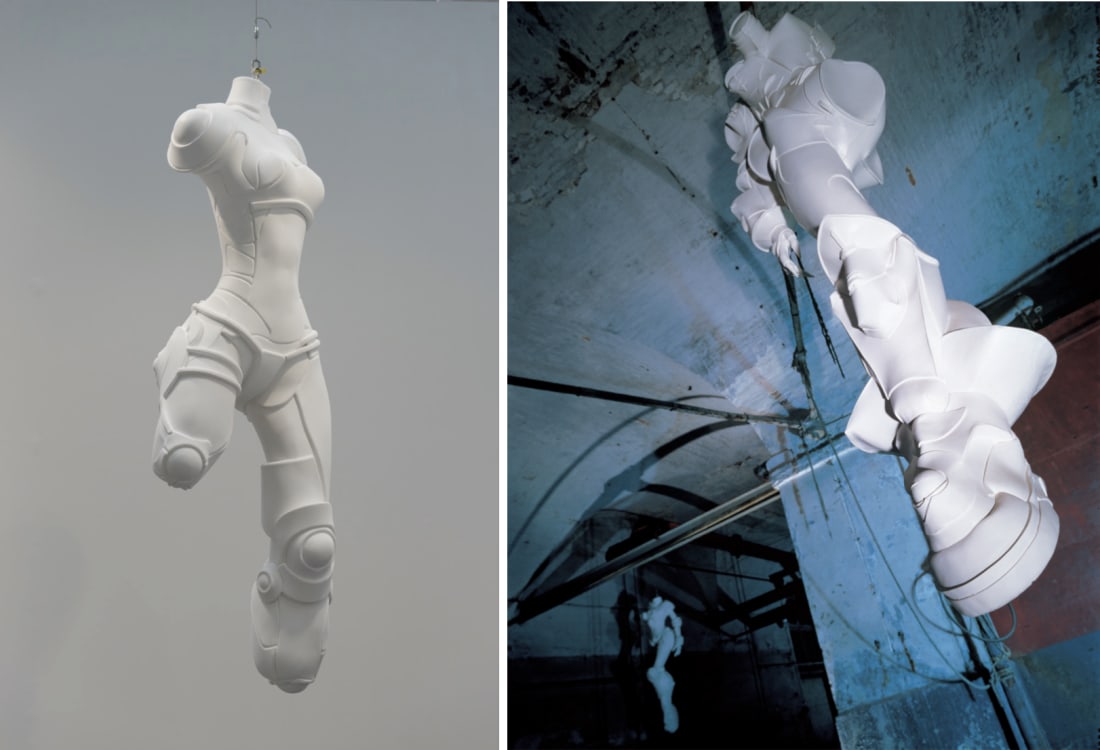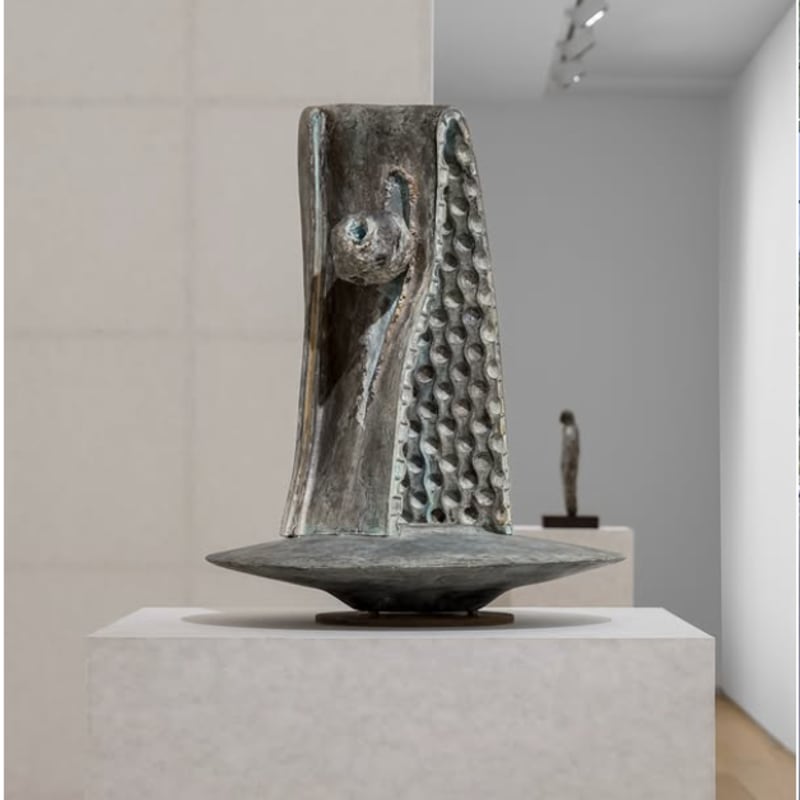Lee Bul On My Shelf
The ‘monstrous’ aspect of my work is about exceeding the prescribed boundaries, touching upon our fear and fascination with the uncategorizable, the uncanny. – Lee Bul
I’d rather be a cyborg than a goddess. – Donna Haraway
We are pleased to share a selection of writings that have inspired Lee Bul’s futuristic and mesmerising works. In her works, Lee Bul uses elements of fantasy and science fiction to notably regain control of the ‘otherness’ of the female condition. These genres have always provided a way of looking at our own strange world more clearly. As our reality seems increasingly unfamiliar, we hope that you will find the selection to be illuminating.
Lee Bul studied sculpture in Seoul in the late 1980s. At that time she made street performances wearing monstrous organic forms which challenged the patriarchal idealisation of the female body, as well as its control over public spaces. Her work then progressed towards an interest in biotechnology and the contemporary utopia of mutable forms which would liberate the body, notably through the figure of the cyborg.
Lee Bul’s Cyborg sculptures (1997–2011) use the figure of the perfect, manufactured, sometimes limb-less cyborg to interrogate the oppression of women in our society, a tactic which is rooted in Donna J. Haraway’s pioner feminist essay: ‘A Cyborg Manifesto’, of which you can read an excerpt here.
In 2017 our London gallery held a Lee Bul exhibition titled After Bruno Taut. The sculptures on view were inspired by Taut’s utopian visions of an ‘Alpine Architecture’ influenced by Paul Scheerbart’s writings on Glass architecture.
The second phrase in the title of Lee Bul’s 2005 Mon grand récit: Weep into stones refers to a line in Hydriotaphia, Urn Burial (‘To weep into stones are fables’), a discourse on funeral practice in Norfolk which is also a meditation on life, death and the passage of time. Written in 1658 by Thomas Brown and revered by Joyce, Borges, Sebald and Emerson this sublimely crafted text is wonderfully strange and eccentric. Full text available here.
Lee Bul’s work is also deeply informed by anime and manga culture. Ghost in the Shell is a Japanese manga series by Masamune Shirow (1989–91) which grapples with philosophical and sociological concerns in relation to identity and technology. View a selection of Ghost in the Shell manga strips.






















































































































































































